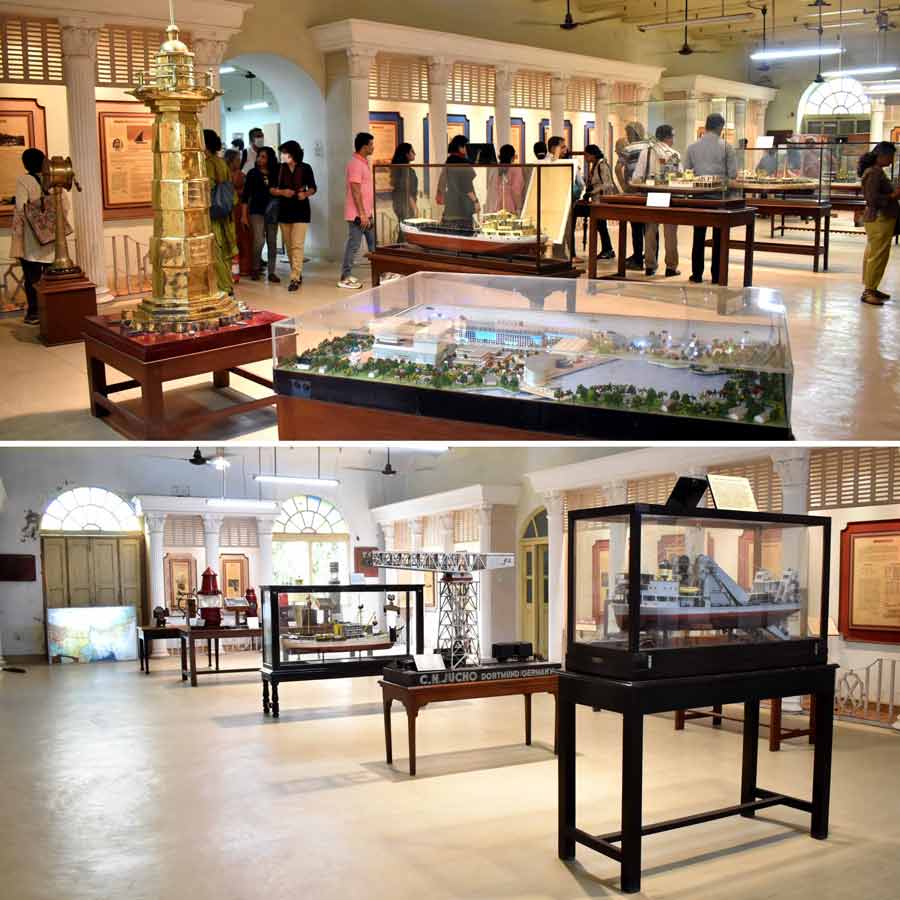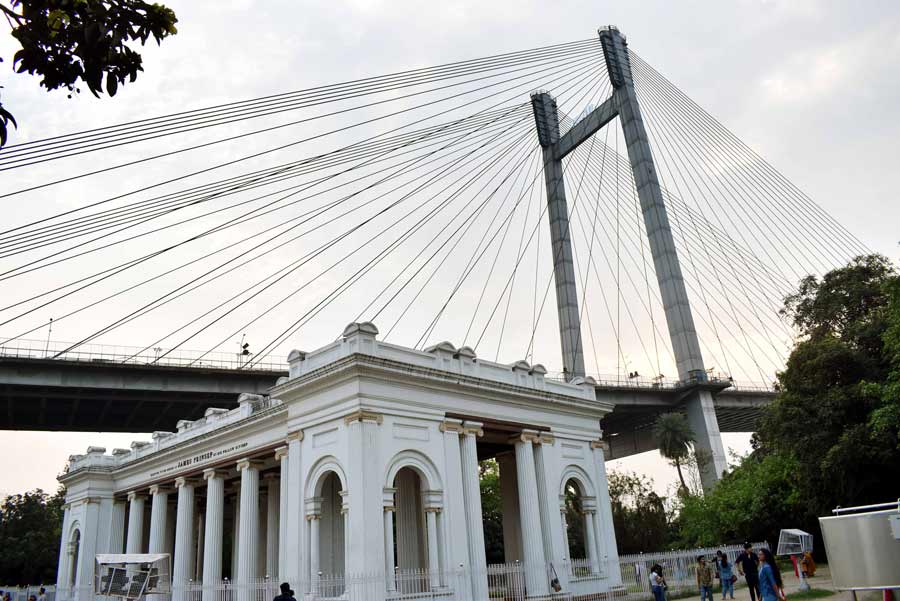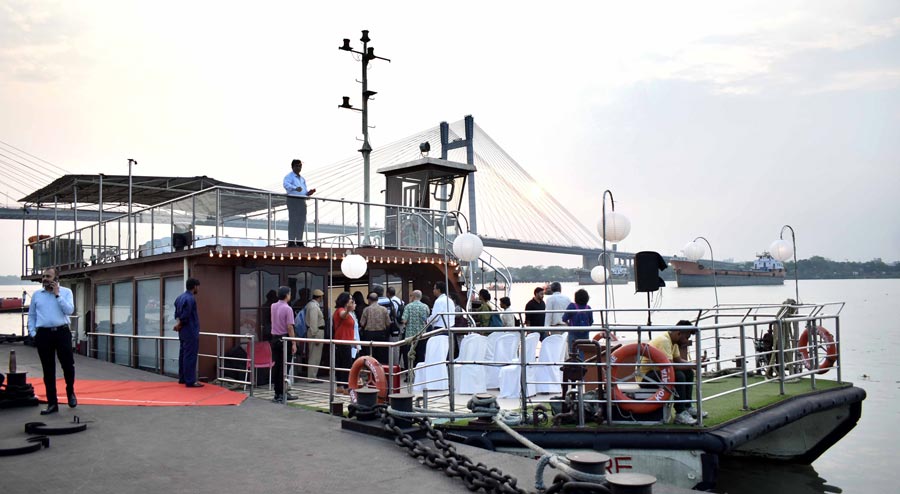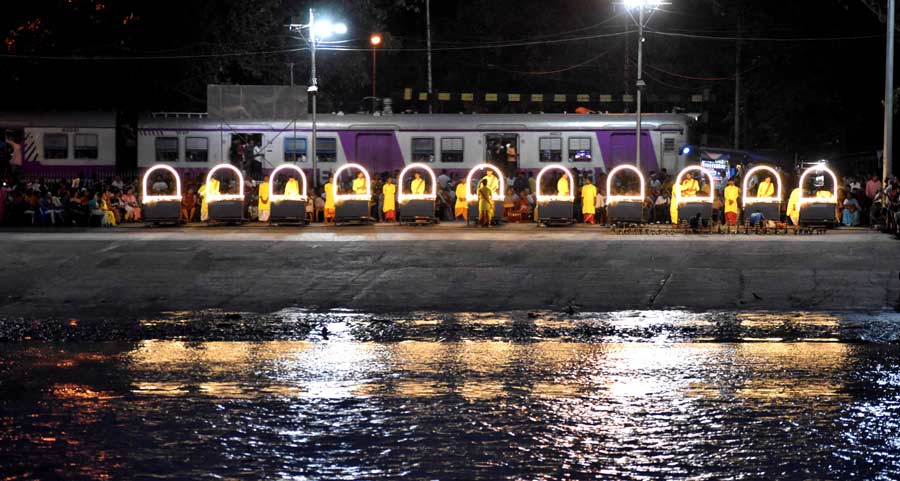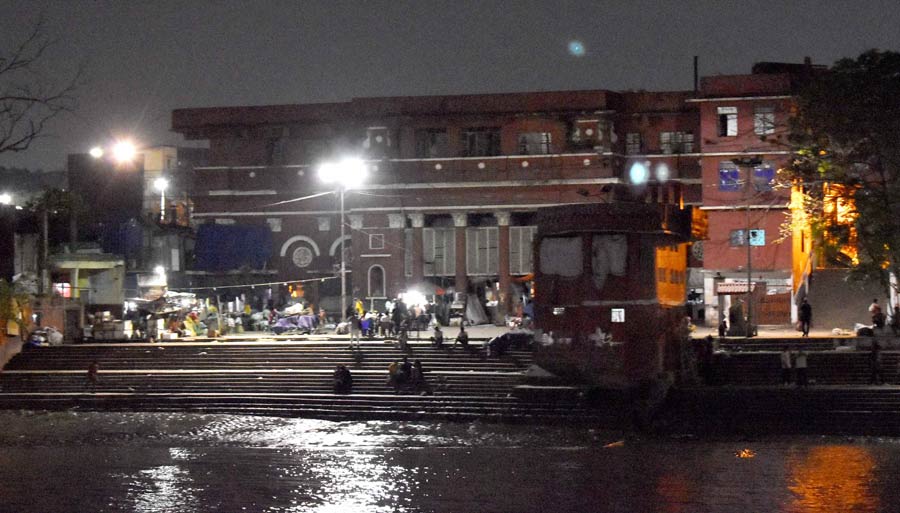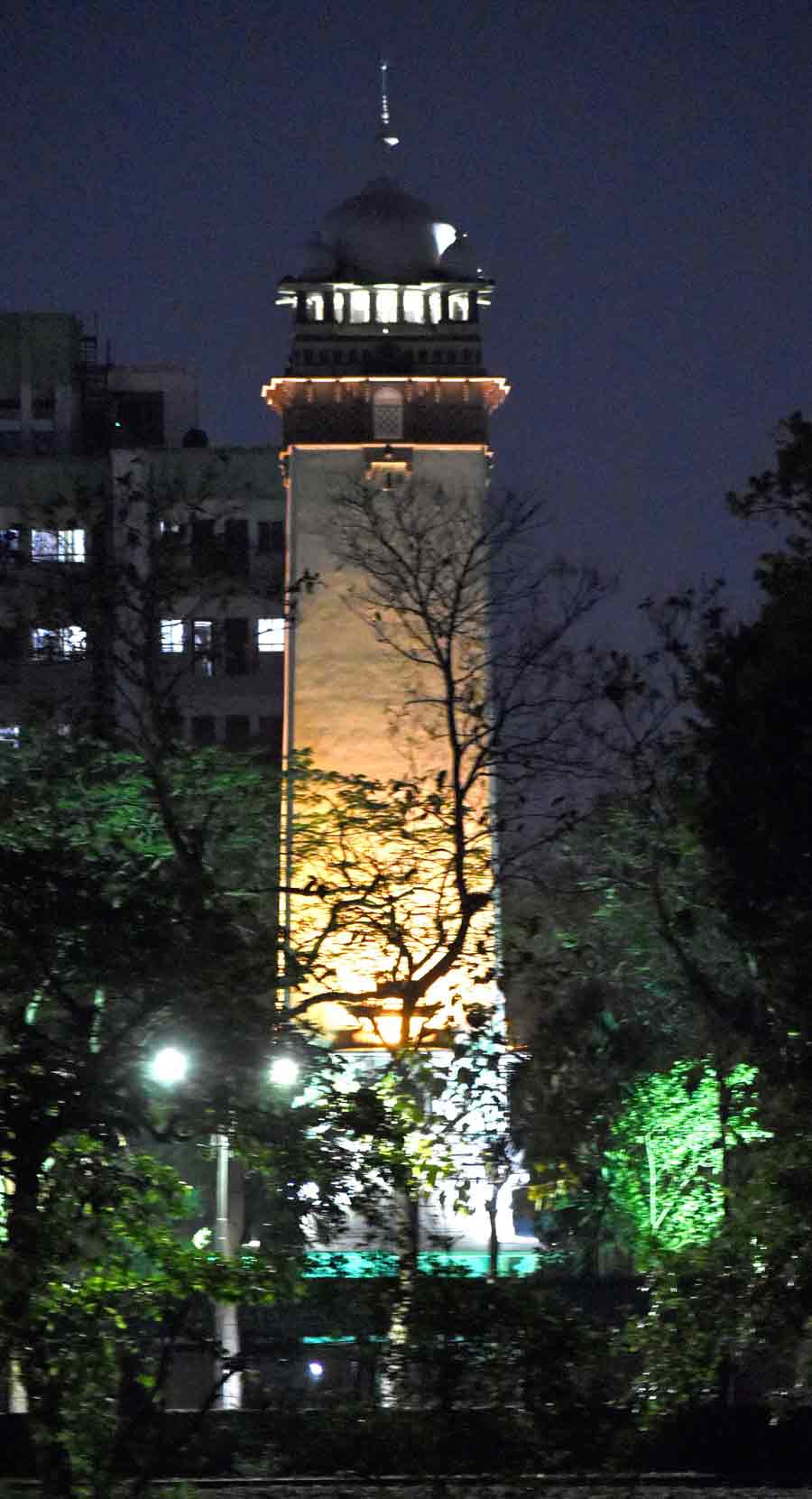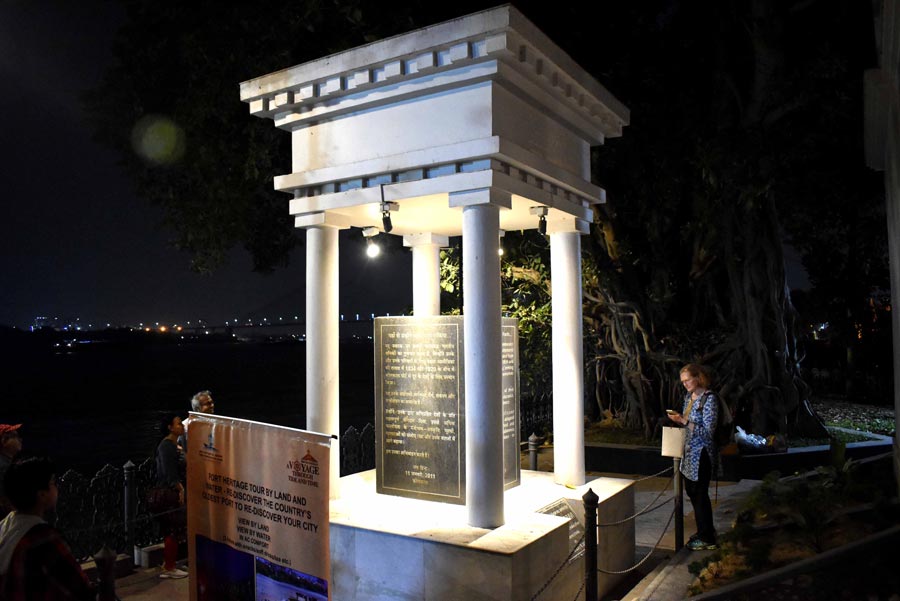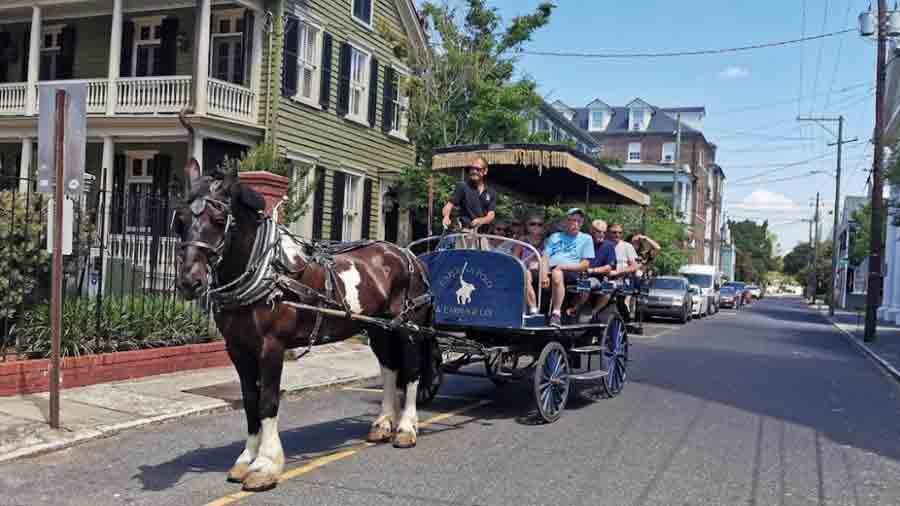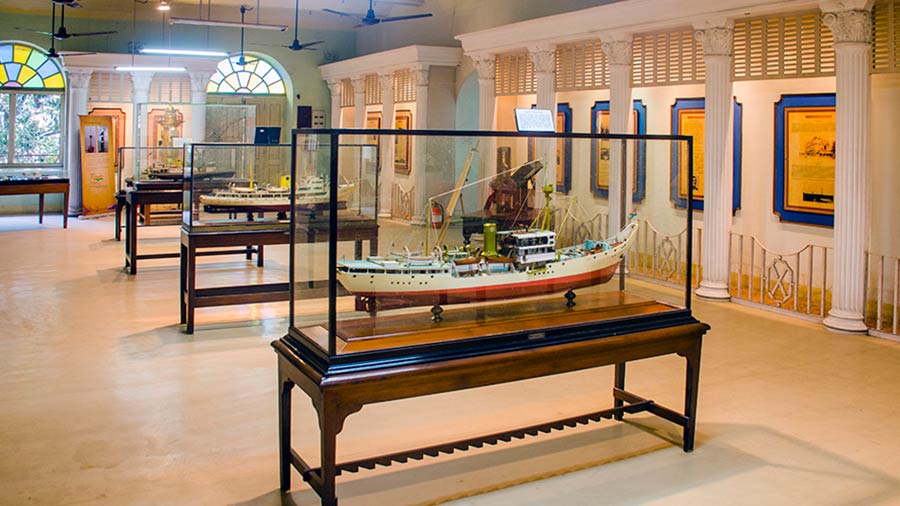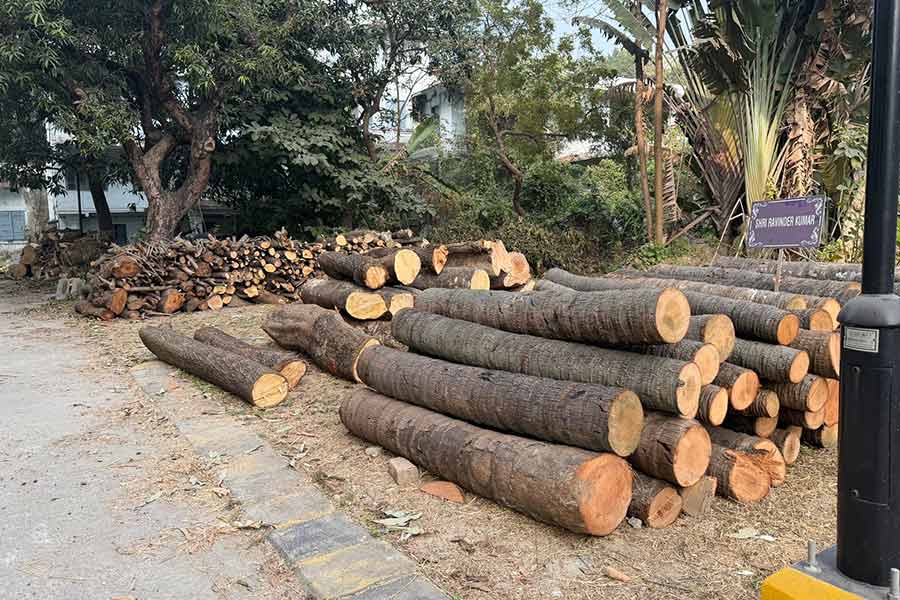
Due to the tectonic shift between the 17th and 18th centuries, Hooghly and Saraswati, two major rivers in Bengal, changed their courses and the Saptagram Port had started to lose its importance and subsequently Kolkata Port gained prominence. After the British came to Kolkata, they realised the importance of the Hooghly River and Kolkata Port for trading purposes and in 1870 they created the Port Trust of Calcutta. Currently, known as Syama Prasad Mookerjee Port Trust of Kolkata, it is the oldest port among the 13 major ports of the country. It is not easy to narrate the 150-year history of this port in a few hours, but Syama Prasad Mookerjee Port Trust in association with The Ganges Walk did a commendable job. The 29th Voyage Through Tide and Time – a heritage tour on land and water included 40-odd participants on Saturday afternoon. Curated by Gautam Chakraborti, former security adviser and present honorary heritage adviser of KoPT, the tour started at the Maritime Archives & Heritage Centre and was completed at Indentured Indian Labourers Memorial. “The six-hour journey was designed to showcase the importance and historic value of Kolkata and the port. The city was the capital of India till 1911 and has been a part of several historical events,” said Chakraborti.
Photos: Ashim Paul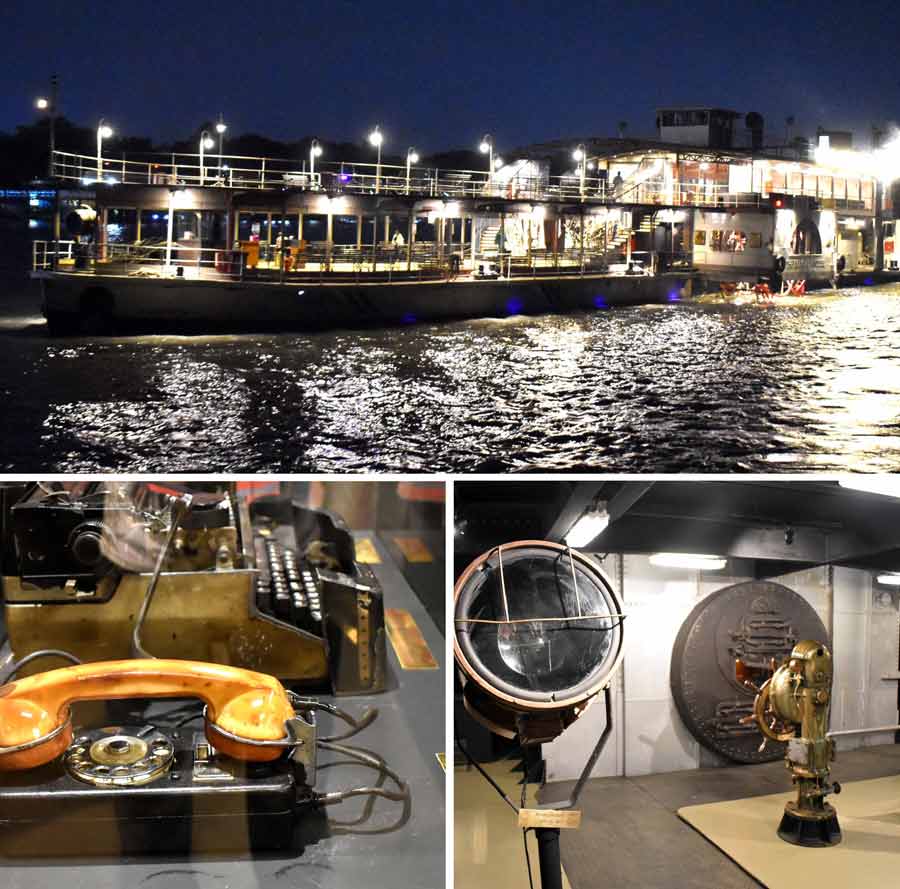
The small ship took the group to another historic ship Paddle Ship Bhopal, which was built in 1942 in England’s Dumbarton Shipyard. After restoration, it is now known as The Bengal Paddle. It is one of the two remaining paddle ships in the world. The ship was mainly used for inland trades and later as a passenger ship. After restoration by a private company, the ship is leased out to private parties. A part of this historic ship, like the broiler room, has been transformed into a museum
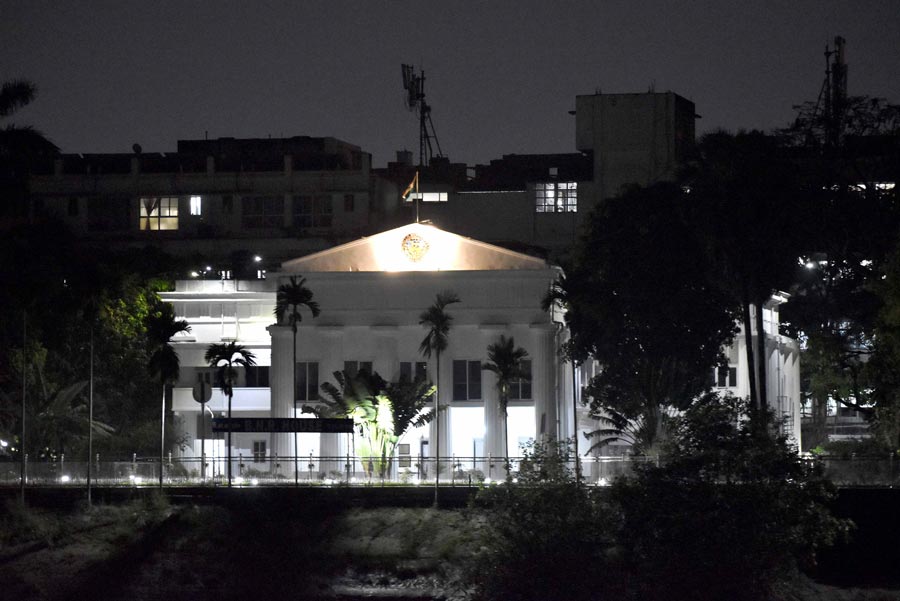
Known as the BNR House, it is the residence of the general manager of the South Eastern Railway. However, this was originally built by Nawab Wajid Ali Shah. The Nawab was kept under house arrest by the British in Fort William in 1856. On his release, Shah made several buildings at Garden Reach, including this bungalow as his Parikhana. As per common belief, this was the birthplace of Kolkata’s Biryani
